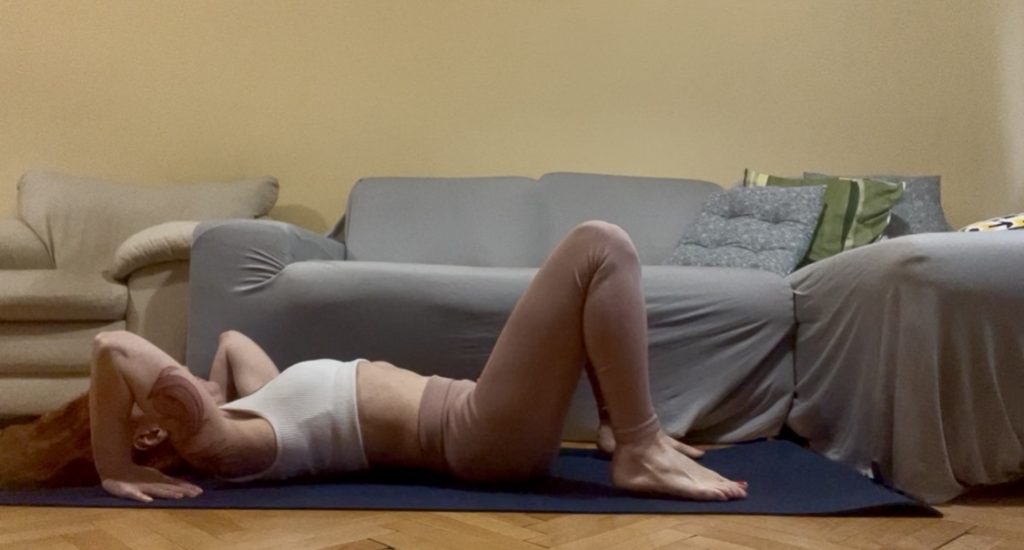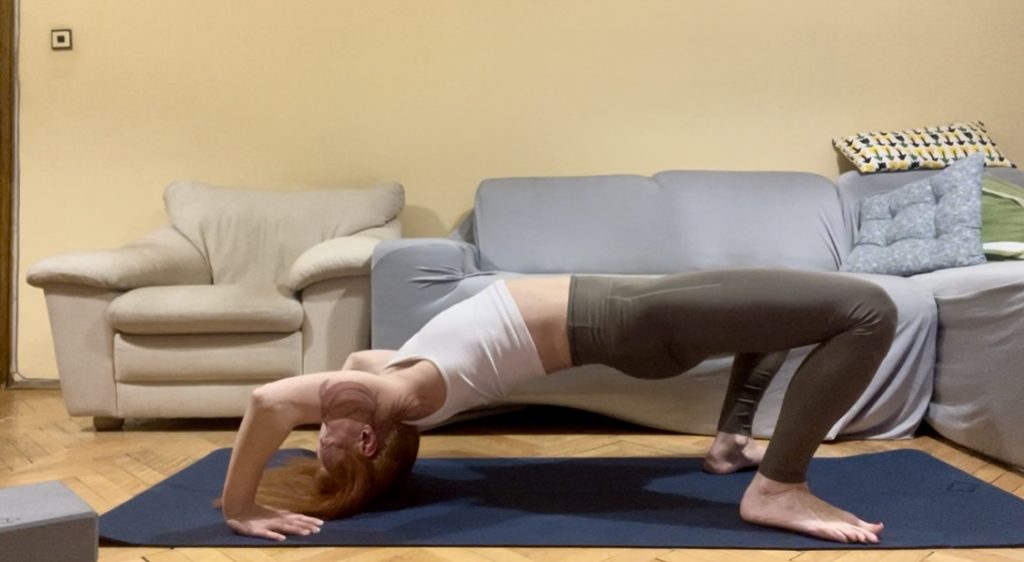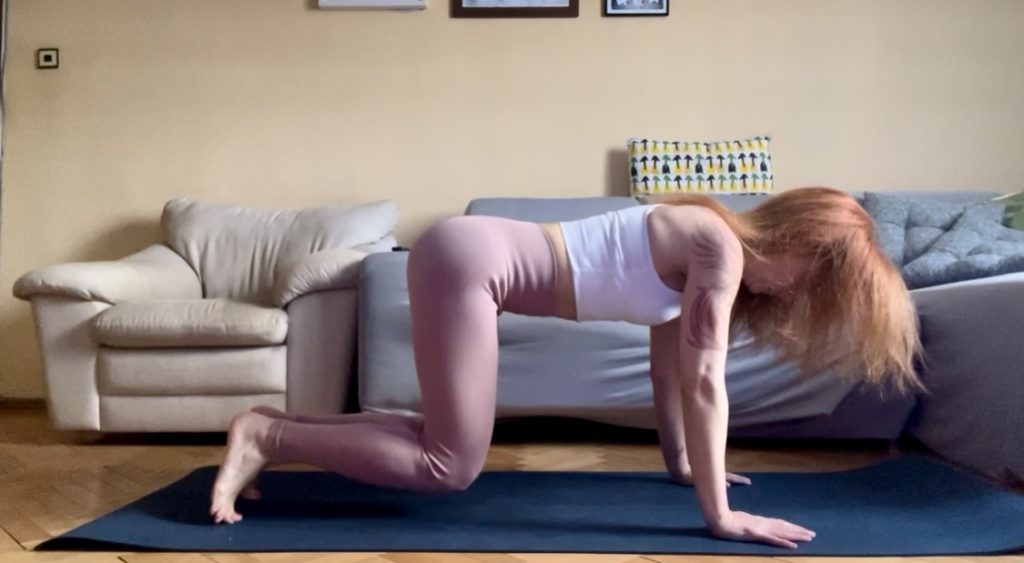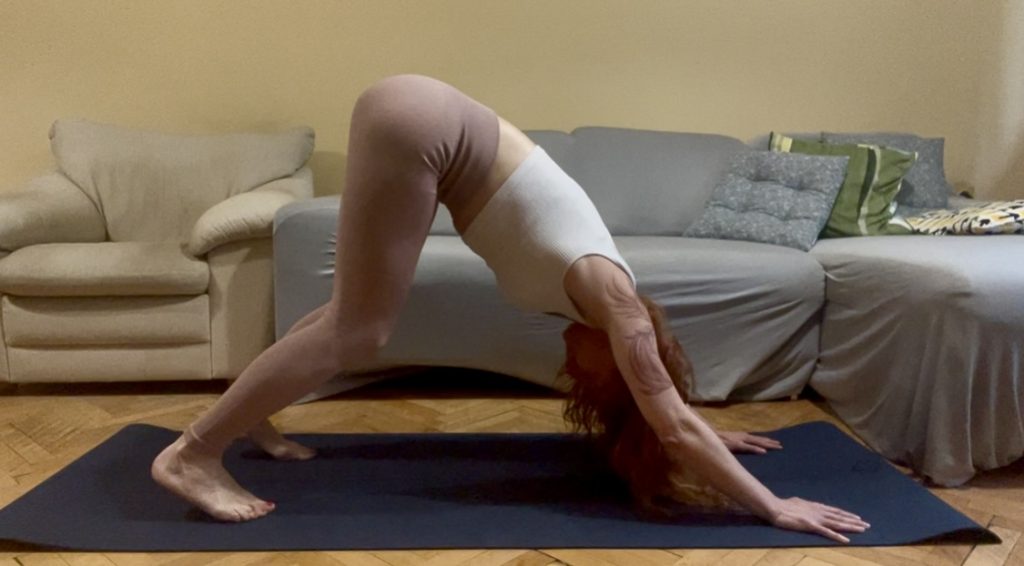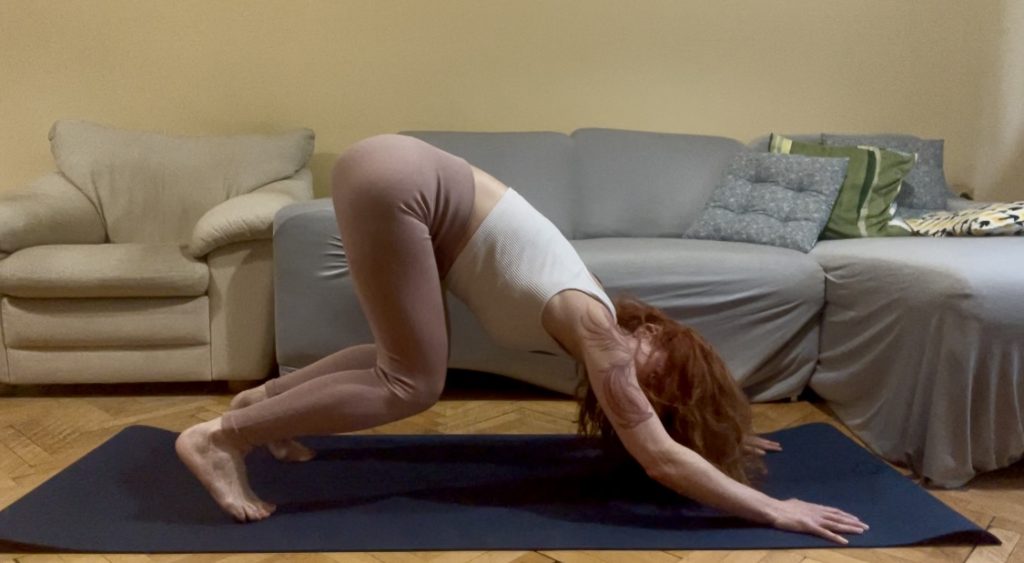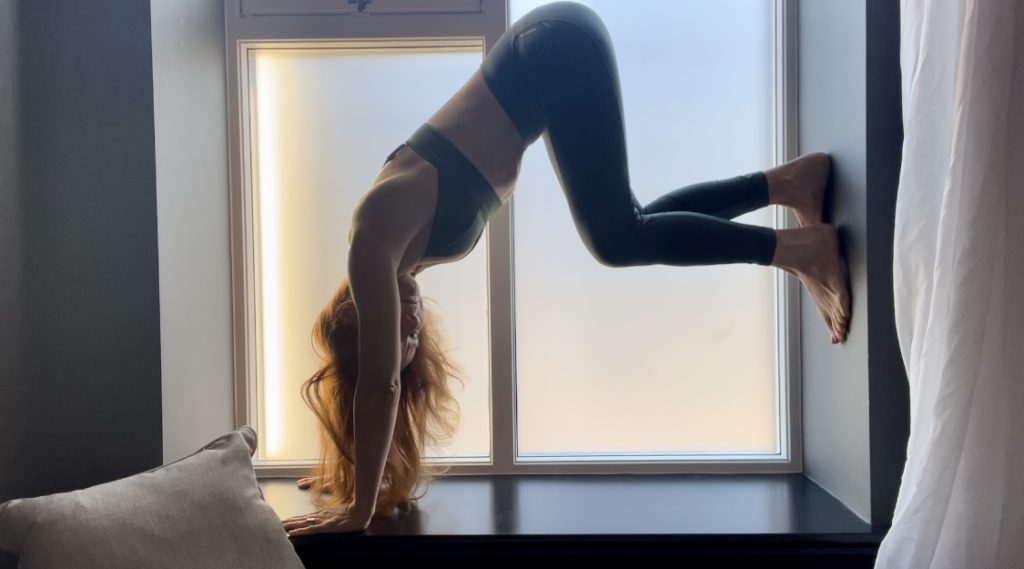
Is There a Connection Between Yoga and Calisthenics?
At first glance, one might assume that yoga and calisthenics are entirely distinct. While yoga typically emphasizes smooth, slow movements paired with specific breathing techniques, this isn’t always true. For instance, practicing Power Yoga can provide a dynamic workout that significantly tests your strength. Furthermore, even slower poses require substantial muscle strength, endurance, focus, and flexibility.
Conversely, calisthenics uses body weight for resistance to build strength, flexibility, and endurance. This method includes movements such as push-ups, pull-ups, and squats, emphasizing functional fitness.
Yoga and Calisthenics
However, both practices share important similarities. They intertwine essential skills needed to perform yoga and calisthenics effectively. Specifically, both promote flexibility, strength building, balance, breath control, body awareness, injury prevention, and good posture.
Personally, I have a deep appreciation for yoga. It has become integral to my life since I began practicing seriously. Notably, yoga enhances my calisthenics routine, helping me develop a more stable muscle mass.
Ultimately, this combination represents the optimal approach for a healthy mind and body.
Common Traits Between Yoga and Calisthenics: Why Yoga Can Build Useful Skills for Calisthenics
Flexibility
Yoga significantly enhances flexibility, which is essential for a better range of motion in calisthenics and gymnastics. This increased flexibility not only improves performance but also reduces the risk of injury.
Strength Building
Many yoga poses require strength to hold, contributing directly to core and overall body strength beneficial for calisthenics. For instance, Plank and Crow poses enhance muscle engagement similar to bodyweight exercises.
Balance and Stability
Additionally, yoga emphasizes balance and stability, vital components of calisthenics and gymnastics. Poses like Tree Pose improve control during dynamic movements.
Breath Control
Moreover, yoga prioritizes pranayama, or breath control, helping athletes maintain stamina and focus. Mastering breathing techniques enhances performance and manages fatigue.
Mind-Body Connection
Yoga fosters mindfulness and body awareness, crucial for understanding limits and improving technique in both disciplines, leading to safer and more effective workouts.
Recovery and Injury Prevention
Furthermore, the stretching and relaxation techniques in yoga support muscle recovery and help prevent injuries by maintaining elasticity and reducing tension after workouts.
Complementary Training
Incorporating yoga into a calisthenics or gymnastics regimen serves as an effective cross-training method, enabling athletes to develop a balanced fitness profile by enhancing both strength and flexibility.
Posture and Alignment
Finally, good posture is vital for executing calisthenics and gymnastics moves effectively. Yoga promotes awareness of body alignment, refining athletes’ techniques.
Yoga and Calisthenics: A Combination Worth Trying
Both calisthenics and yoga are convenient practices that need no equipment, which is fantastic. Certain foundational poses can help you develop the skills necessary for calisthenics. Moreover, you don’t need long sessions—just do what feels comfortable. As you experience yoga’s benefits, you may naturally want to extend your practice.
Additionally, yoga is ideal for waking up your body in the morning or relaxing muscles after a workout due to its slow, fluid movements. You can mix several essential poses into various flows, and as you gain experience, consider adding new challenges. Ultimately, pushing your limits and achieving your goals is incredibly rewarding.
Before I share key yoga asanas for building calisthenics skills, keep in mind that yoga isn’t about forcing your body. Instead, explore your boundaries at your own pace. Precision is crucial and requires patience. If you encounter discomfort, take a step back and proceed gently. Remember, pushing through pain contradicts the essence of yoga.
What Are the Basic Yoga Asanas (Poses) Worth Practicing?
Plank Pose (Phalakasana)
Start by lying on your stomach. Then, lift your body, using your toes as support for the lower body and your palms for the upper body. Ensure your arms are extended, your spine is straight, and your body forms a straight line. While holding this position, engage your entire body, aiming for at least 30 to 60 seconds.
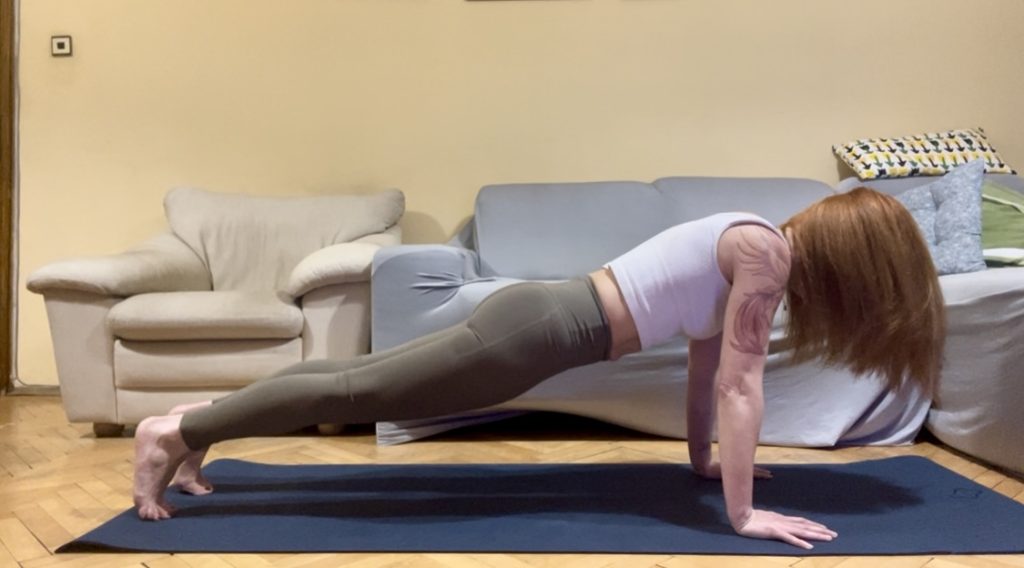
This pose effectively engages your core, shoulders, and legs, providing a solid foundation for calisthenics.
Chaturanga Dandasana (Four-Limbed Staff Pose)
Begin in a push-up position, but align your palms with your chest and bend your elbows, keeping your body off the floor. Lower your body toward the ground like a push-up, but hold this position without straightening your arms. Again, strive to maintain this pose for 30 to 60 seconds.

Chaturanga
This asana is highly effective for building core and upper body strength, mimicking the push-up movement crucial for calisthenics.
Crow Pose (Bakasana)
This intermediate pose can start with just marking the movements. Begin in a squat with feet close and knees wide. Place your hands on the ground, shoulder-width apart. Lift your heels and rest your knees on your upper arms. Gradually lift your feet off the ground, balancing on your hands. Keep your gaze forward as you hold for a few breaths, and then lower your feet back to return to the squat.
To improve balance, focus on engaging your core and breathing steadily. Fix your gaze on a point for extra stability—this helps! Start by holding for 10 to 20 seconds, then gradually increase the time. Crow Pose is a fantastic arm balance that builds strength in your arms, wrists, and core.
Boat Pose (Navasana)
Sit on the floor with your legs extended in front of you. Lean back slightly, keeping your spine straight, and lift your legs by bending your knees. You can bring your feet parallel or straighten them for a challenge. Extend your arms forward, parallel to the ground, and engage your core. Hold for 15 to 30 seconds while breathing steadily. If it’s too challenging, start with bent knees.
This pose targets your abdominal muscles and hip flexors, enhancing the core strength necessary for advanced calisthenics skills.This pose targets your abdominal muscles and hip flexors, enhancing the core strength necessary for advanced calisthenics skills.
Bridge Pose (Setu Bandhasana): Start by lying on your back with your knees bent and feet hip-width apart. Place your arms alongside your body with palms down. Press your feet into the ground and lift your hips toward the ceiling. For a deeper stretch, clasp your hands under your back. Even though I have spine implants, making this pose challenging, I keep practicing. Hold for 15 to 30 seconds while breathing steadily, then release your hands and lower your hips.
Bridge Pose strengthens your glutes, hamstrings, and lower back. Additionally, it improves spinal flexibility, opens the chest and shoulders, promotes better posture, and helps alleviate stress and anxiety.
Side Plank (Vasisthasana)
Begin in a classic plank position. Lift your right arm and rotate your body to the right, transitioning into a side position with your body in a straight line. Extend your right arm as a continuation of your left arm, which supports you on the ground, with your feet resting on your left foot. Hold for 30 to 60 seconds, then switch sides and repeat.
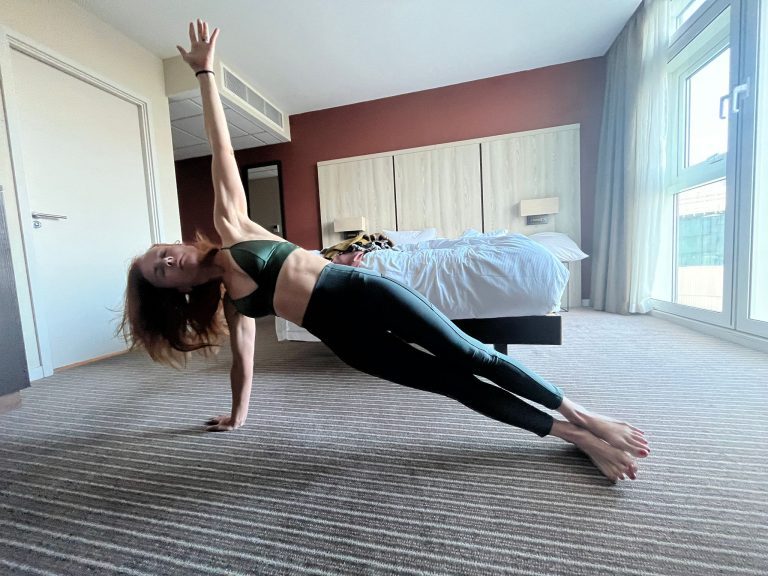
Side Plank
Side Plank strengthens your core and shoulders while improving balance and stability. It also promotes spinal alignment, increases flexibility, builds functional strength, and enhances mental focus.
Downward-Facing Dog (Adho Mukha Svanasana)
Start in a tabletop position. Lift your hips up, straightening your legs to form an inverted V shape. Press your hands into the ground and aim to bring your heels toward the floor. Relax your head, letting it hang while keeping your neck loose. Bend your knees slightly if needed, and engage your core with shoulders away from your ears.
Hold this pose for 30 seconds to 1 minute. Downward-Facing Dog strengthens your shoulders and arms while stretching your hamstrings and calves, ultimately improving overall athletic performance.
Pigeon Pose (Eka Pada Rajakapotasana)
Begin in a tabletop position on your hands and knees. Tuck your toes under, lift your hips, and press back into Downward Facing Dog. Lift your right leg and bring your right knee toward your right wrist. Place your right shin on the ground, angled diagonally. Slide your left leg back, keeping it straight and in line with your hip. As you inhale, lengthen your back. Exhale and gently lower your upper body over your right leg, resting on your forearms or extending your arms forward. Stay in this position for 30 seconds, breathing deeply. Press into your hands to come back to Downward Dog, then repeat on the other side.
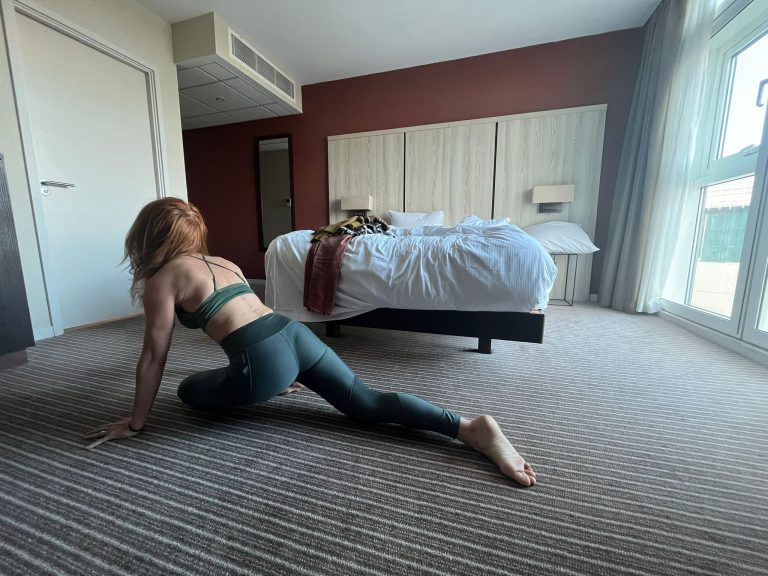
Pigeon Pose
Integrating the Pigeon Pose into your routine fosters better hip mobility and flexibility. Enhanced hip openness can improve your performance in various calisthenics movements such as squats, lunges, and leg raises.
Hare Pose (Shashankasana)
I love to finish my yoga flow with the calming Hare Pose. This pose is quite simple. Place your palms on your heels behind you, inhale to stretch your spine, and then lower your head to the floor. Exhale completely. Inhale again, rounding your spine and bringing the crown of your head to rest on the mat in front of your knees.

Hare Pose
Finally just try it
Incorporating these poses into your training routine not only builds essential strength and stability but also heightens your body awareness for effective calisthenics. Moreover, you’ll feel the powerful benefits of yoga. You can blend the poses into various flows, choosing to move slowly with smooth transitions or dynamically while still ensuring ease between each movement.
So, give yoga a chance and make it part of your daily routine. Sometimes, just 5 minutes a day can create remarkable changes. I share this from my heart, as I experience these benefits daily through my yoga practice, and I believe what comes from personal experience is truly invaluable.
If you’d like me to guide you through the described asanas, feel free to reach out—I would be delighted to help!
Explore the synergy of yoga and calisthenics. Discover essential poses to boost strength, stability, and body awareness for optimal performance.






